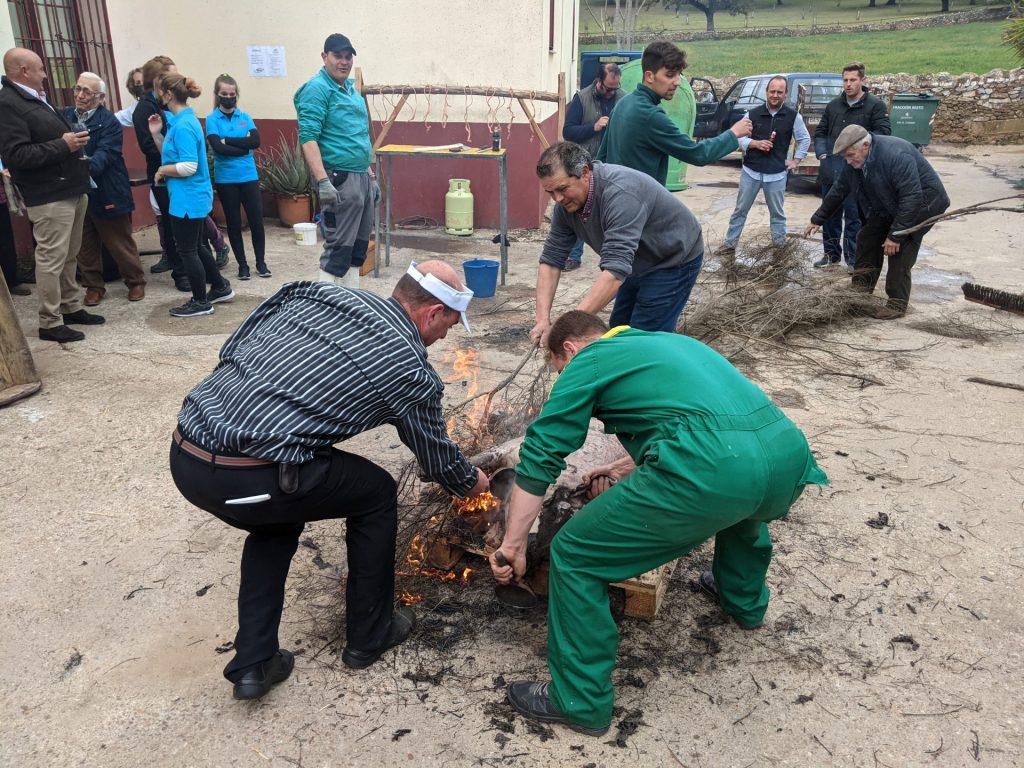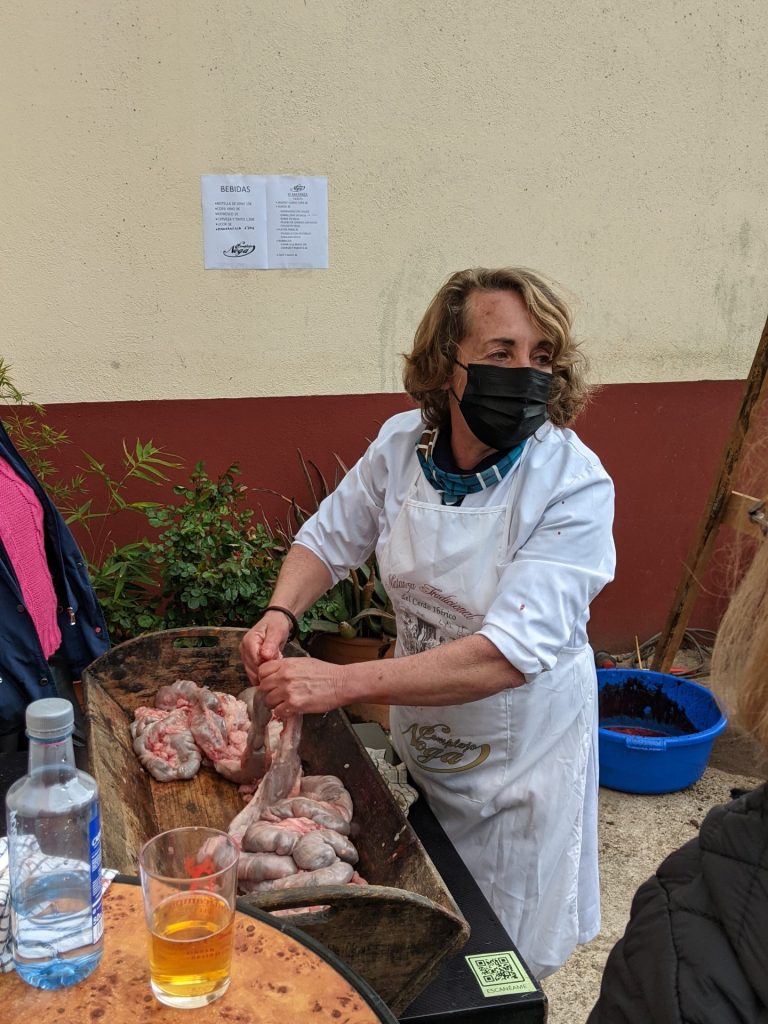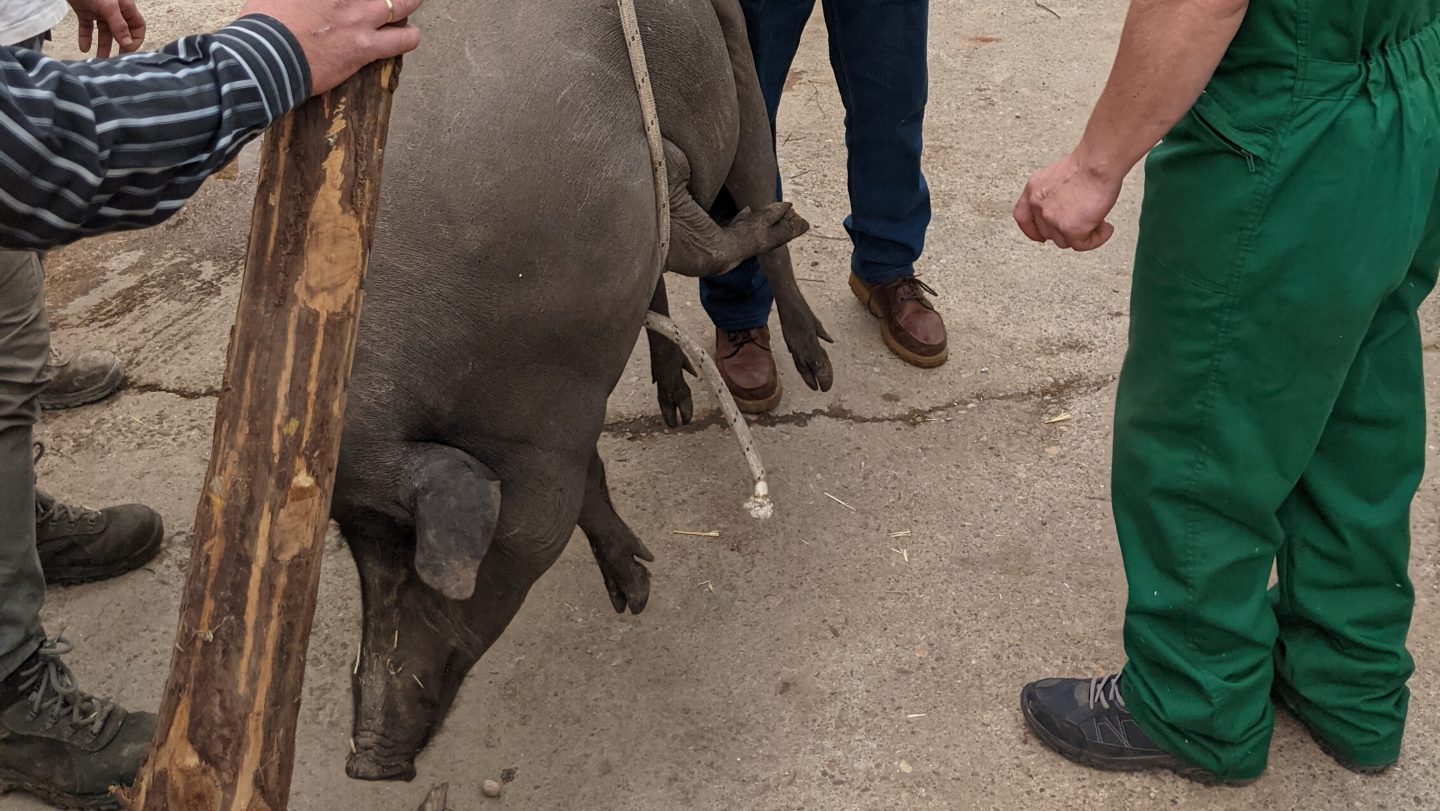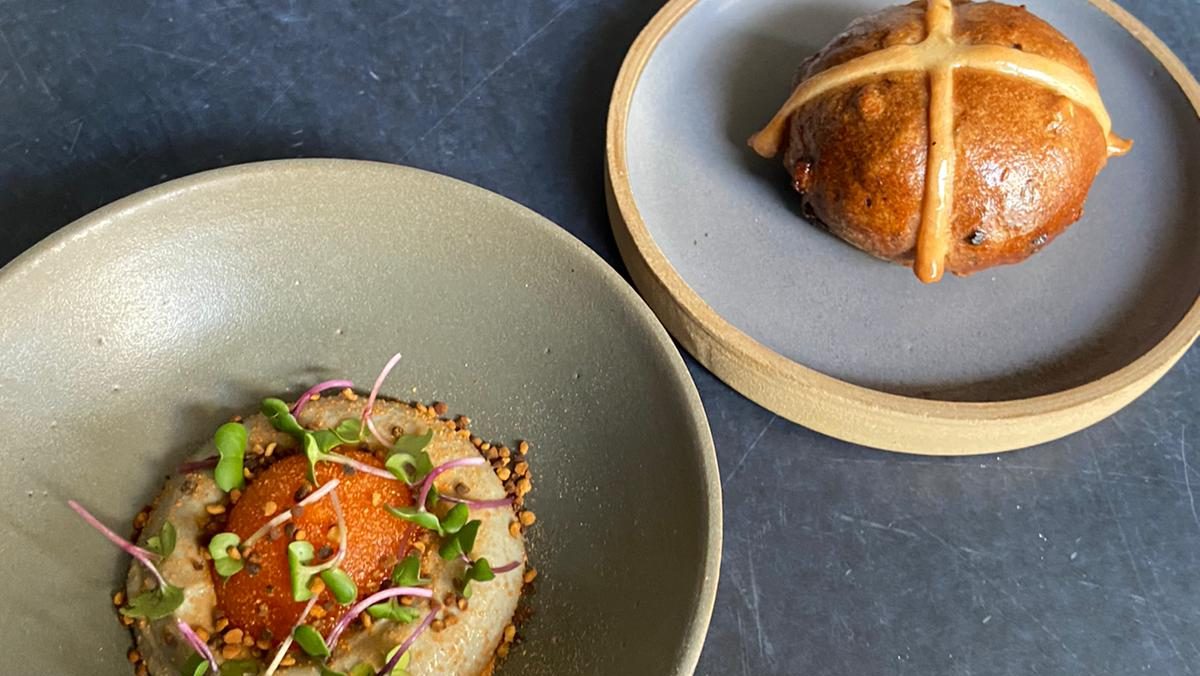On a cold Saturday in spring we witnessed a killing. The matanza, or
traditional pig slaughter, was once the way Extremaduran families would
get their annual supply of meat, to be stored for months in cool cellars. These days, in the parts of southern Spain where the tradition continues, it
is more of a big day out.
If you’ve read this column before, you’ll know that in our local village, Fuentes de León, the petrol station is a centre of social activity and
entertainment. So when a friend sent us their flyer for the fourth matanza
tradicional extremeña de cerdo ibérico, promising top-quality pork products,
typical pastries, regional wine and DJ till dawn, we knew it was a must-go.
The flyer said the day would kick off with the weigh-in at midday. There was no way it was going to start on time, but we were anxious not to miss the guess-the-weight-of-the-pig competition, so we got to the petrol station shortly after noon.
An outdoor speaker was already blaring flamenco favourites, and a handful of old men were having their first drink of the day. The pig was there, penned to the wall next to the bar. The matadero (slaughterman) was pacing around in white wellingtons and the event overseer, Miguel, a country vet in a quilted jacket, was noting guesses on his clipboard.
We had done a little homework, asking our pig farmer neighbour Antonio what a fully grown, acorn-fed pata negra pig might weigh. Around 150kg, roughly twice the weight of a man, he said. Worth about €600 (£500).
Julia thought the pig in question looked on the small side, so plumped for 147kg, which translates as 12.05 arrobas, the traditional measure still used to weigh livestock and cork in Spain and Portugal. Miguel gave an encouraging nod. The pig isn’t fed for 24 hours before the matanza, he said, and sheds a little weight.
Slowly, families were starting to arrive. Women handed round plates of migas and little cups of red wine. Migas extremeñas is the region’s traditional peasant food, loved by everyone. It is simply made with crumbs of stale bread, lightly fried in olive oil with garlic and peppers. Sometimes it includes bits of pork or chorizo but – symbolically it seemed – not here. The pork was yet to come.
After a good two hours of amiable standing around, the weighing began. Six men, including a couple of waiters from the bar, wrestled the squealing pig into a rope harness and when it settled, one of them squinted to read the weight: 12.05 arrobas exactly.
As Julia accepted her prize, the pig was bundled into a trailer and taken round the back to be stunned and slaughtered with a knife to the throat.
They call this part, out of sight of the crowd and supervised by a vet, the
sacrificio. After a few minutes of bloodletting, the dead pig was back, and now the men set fire to it with brushwood, in order to scrape off the skin and bristle. Tiny children jumped around close to the flames.

At last, the matadero began butchering the animal, and it was impressively quick.
He used his knife to brush away layers of lard (manteca), used to make pastries. The disembowelling followed, dropping pieces of offal into an array of bowls, to be used by the women to make chorizo, with garlic and pimentón (paprika); and morcilla, the region’s tasty black pudding, made with blood and flavoured with oregano. He removed and neatly trimmed the jamones (hind legs) and paletas (shoulders), to be caked in salt and cured for at least 24 months to produce delicious jamón ibérico. Then he moved on to the cuts of pork that most of us have seen only at the butcher’s or supermarket. As he did, he held each in turn above his head, naming the parts: solomillo (fillet),
lomo (loin), and the favourite Spanish cuts – presa, pluma and secreto – before
hanging them on a wooden frame. It was a grisly education, and took just 15 minutes from nose to tail.

Afterwards at the barbecue, Julia blew her winnings on sharing plates of
salty ibérico pork and a bottle of chilled red wine. Other stalls offered chorizo and bacon, tripe with chickpeas, pork cheeks and pigs’ tails. Nothing goes to waste.
We asked if any of the dishes came from the pig we had just seen slaughtered. Not any more, said our friends. These days, the meat must be
analysed at a veterinary lab before being declared fit to eat.
As the live music got under way, and the villagers settled in for a long evening, we decided to slip away. Leaving, we noticed that in the hollow
by the bar where the killing had happened, the knives, blood and entrails had been cleared away, replaced by a children’s bouncy castle.
Peter Barron is an author for Frommer’s Spain. Follow his blog at adventuresinextremadura.com




